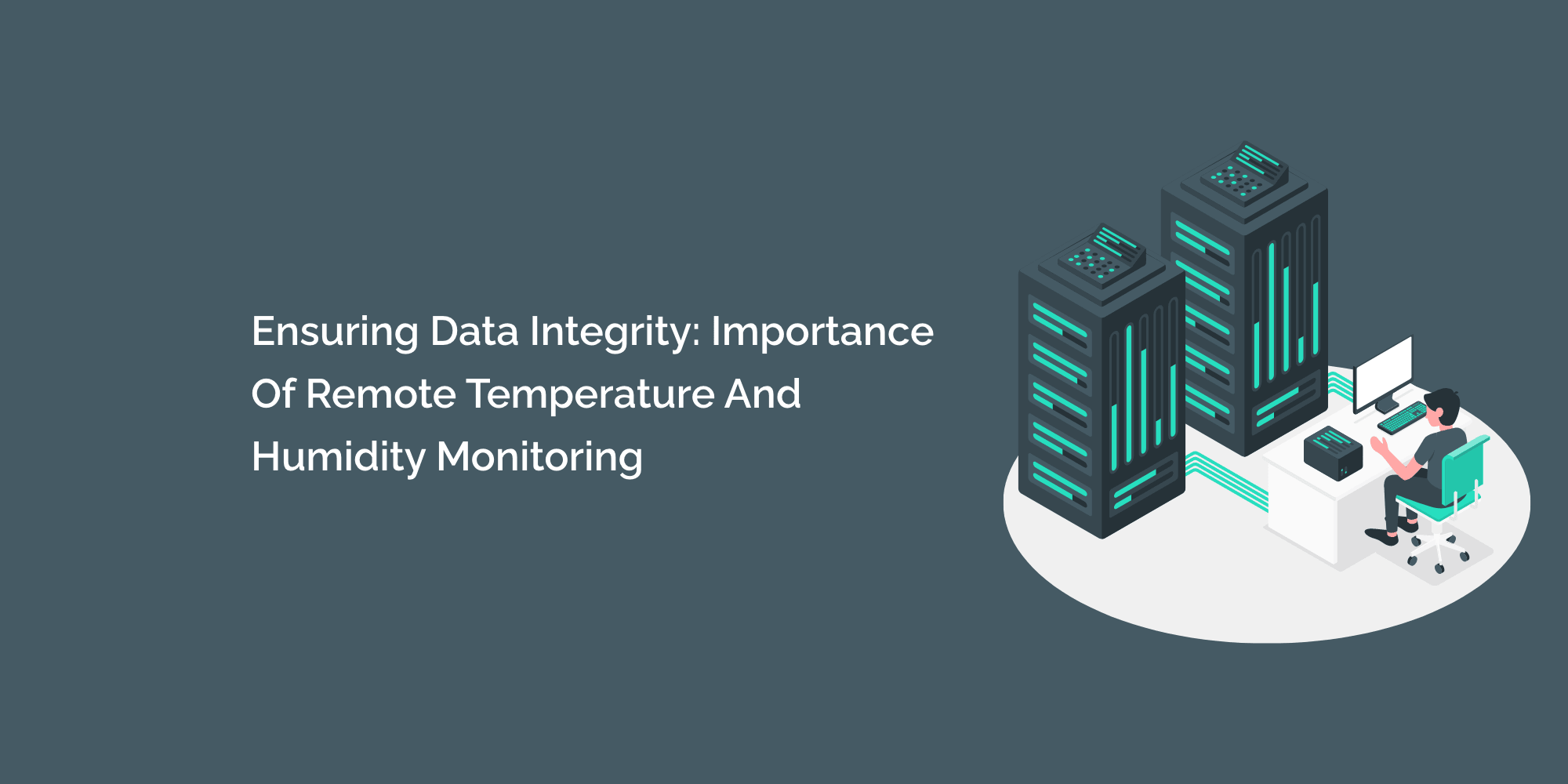Data integrity is a critical aspect of modern businesses that rely on data centers to store and process vast amounts of valuable information. Maintaining the proper temperature and humidity levels within data centers is crucial for ensuring the integrity and reliability of stored data. This blog will delve into the significance of remote temperature and humidity monitoring in safeguarding data integrity. We will explore the risks associated with environmental fluctuations, the benefits of remote monitoring, and the best practices for implementing such systems.
Understanding Data Integrity and Environmental Risks
Data integrity refers to the accuracy, consistency, and reliability of data stored within a system. We will discuss the potential risks environmental factors, particularly temperature, and humidity, pose to data integrity. Fluctuations in these parameters can lead to data corruption, hardware failures, and increased vulnerability to security breaches.
The Role of Remote Temperature and Humidity Monitoring
Remote monitoring systems provide continuous visibility into data centers' temperature and humidity levels. We will explore how these systems enable data center operators to detect environmental anomalies in real time, receive alerts, and take proactive measures to maintain optimal conditions. By implementing remote monitoring, businesses can mitigate the risks associated with environmental fluctuations and ensure data integrity.
Benefits of Remote Temperature and Humidity Monitoring
- Early Anomaly Detection: Remote monitoring systems enable the early detection of temperature and humidity fluctuations, allowing operators to address issues promptly and prevent data corruption or equipment failures.
- Proactive Alerts: Operators receive real-time alerts when predefined thresholds are exceeded, empowering them to take immediate action and prevent potential data integrity issues.
- Compliance with Regulations: Remote monitoring helps businesses meet regulatory requirements by maintaining proper environmental conditions in data centers.
- Equipment Protection: Monitoring temperature and humidity levels safeguard critical IT infrastructure, preventing hardware failures that can compromise data integrity.
- Cost Savings: By avoiding data corruption and equipment failures, remote monitoring systems contribute to cost savings associated with data recovery, system repairs, and potential legal consequences.
Implementing Remote Temperature and Humidity Monitoring
We will discuss the critical considerations for implementing remote monitoring systems, including sensor selection, strategic sensor placement, connectivity options, and integration with existing data center infrastructure. It is crucial to choose reliable and accurate sensors, strategically position them in critical areas, and ensure seamless connectivity for real-time data transmission.
Best Practices for Remote Monitoring Systems
- Threshold Configuration: Setting appropriate thresholds for temperature and humidity levels is essential to trigger alerts when abnormal conditions are detected. We will explore best practices for threshold configuration based on industry standards and specific data center requirements.
- Regular Maintenance and Calibration: Regular maintenance and calibration of monitoring sensors are crucial to ensure accurate and reliable readings. We will discuss the importance of following manufacturer guidelines and establishing a maintenance schedule.
- Data Analysis and Reporting: Utilizing the data collected by remote monitoring systems for analysis and reporting allows businesses to gain insights into environmental trends, identify potential risks, and make informed decisions to ensure data integrity.
Case Studies and Success Stories
We will showcase real-world examples of organizations implementing remote temperature and humidity monitoring to safeguard data integrity. These case studies will highlight the challenges faced, the solutions implemented, and the resulting benefits regarding data protection, system reliability, and compliance.
Future Trends in Remote Temperature and Humidity Monitoring
We will explore emerging trends in remote monitoring technology, including advancements in sensor accuracy and reliability, the integration of artificial intelligence and machine learning for predictive analytics, and the potential for automated response systems. These advancements aim to enhance data integrity and improve overall data center performance.
Certainly! Here are some frequently asked questions (FAQs) about remote temperature and humidity monitoring for ensuring data integrity in data centers:
What is remote temperature and humidity monitoring?
Remote temperature and humidity monitoring involve using sensors throughout the data center to collect real-time data on environmental conditions. This data is then transmitted to a centralized monitoring system, allowing operators to remotely monitor and manage temperature and humidity levels.
Why is remote monitoring essential for data integrity in data centers?
Remote monitoring is crucial for data integrity as it allows operators to have continuous visibility into the environmental conditions within the data center. By monitoring temperature and humidity remotely, operators can proactively identify and address potential issues that could compromise data integrity.
How do temperature and humidity affect data integrity in data centers?
Fluctuations in temperature and humidity can lead to various issues, such as data corruption, equipment failures, and increased vulnerability to security breaches. Maintaining stable and optimal environmental conditions is essential to preserve data integrity and ensure the reliability of stored information.
Conclusion
Remote temperature and humidity monitoring are vital in ensuring data integrity within data centers. By providing real-time insights, proactive alerts, and the ability to maintain optimal environmental conditions, remote monitoring systems contribute to the protection of valuable data, mitigate risks of corruption or loss, and enhance overall data center performance. Implementing best practices, such as threshold configuration, regular maintenance, and data analysis, further strengthens data integrity efforts. As technology advances, businesses must stay vigilant in adopting the latest remote monitoring solutions to safeguard their data and maintain a competitive edge in today's digital landscape.








